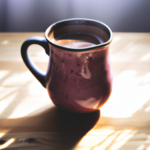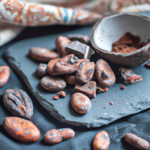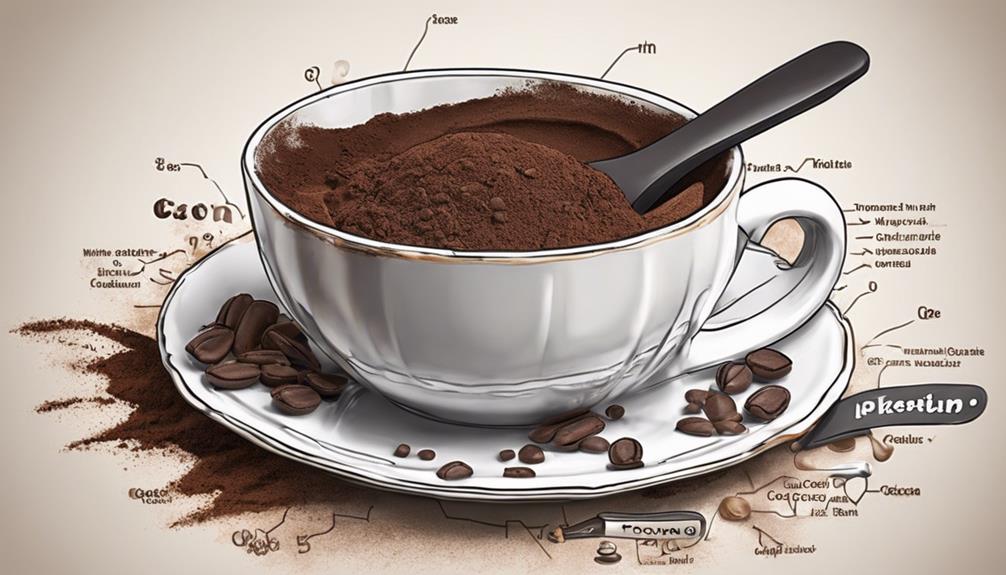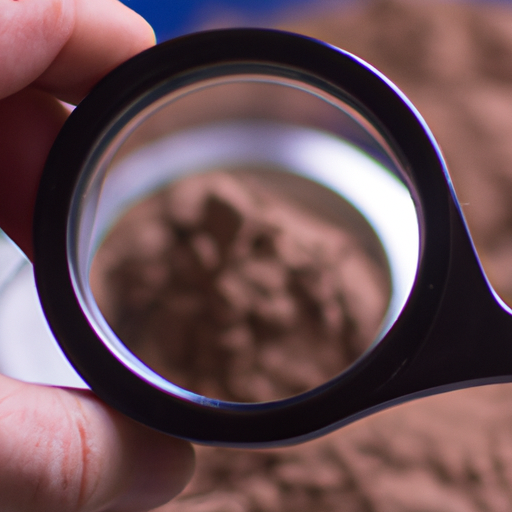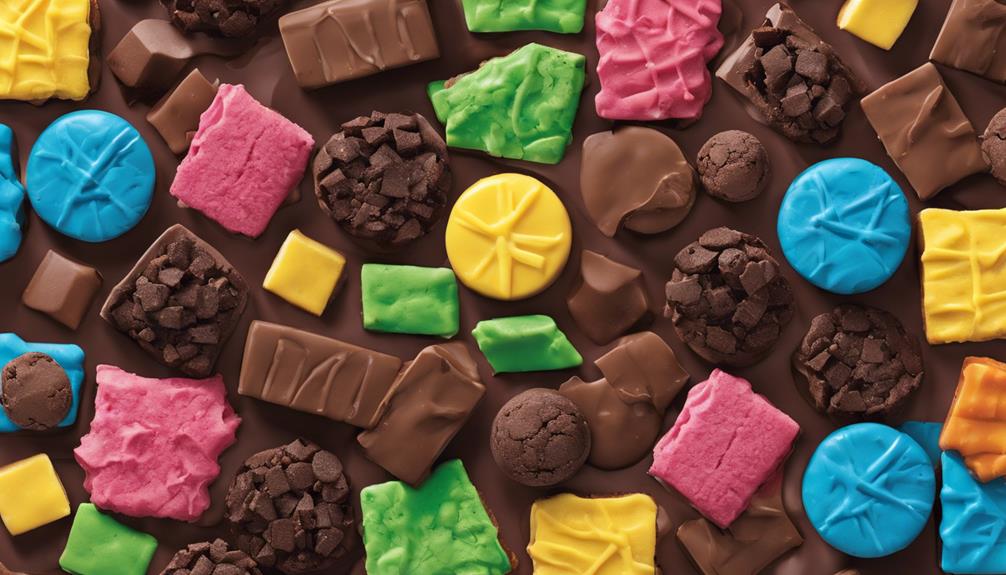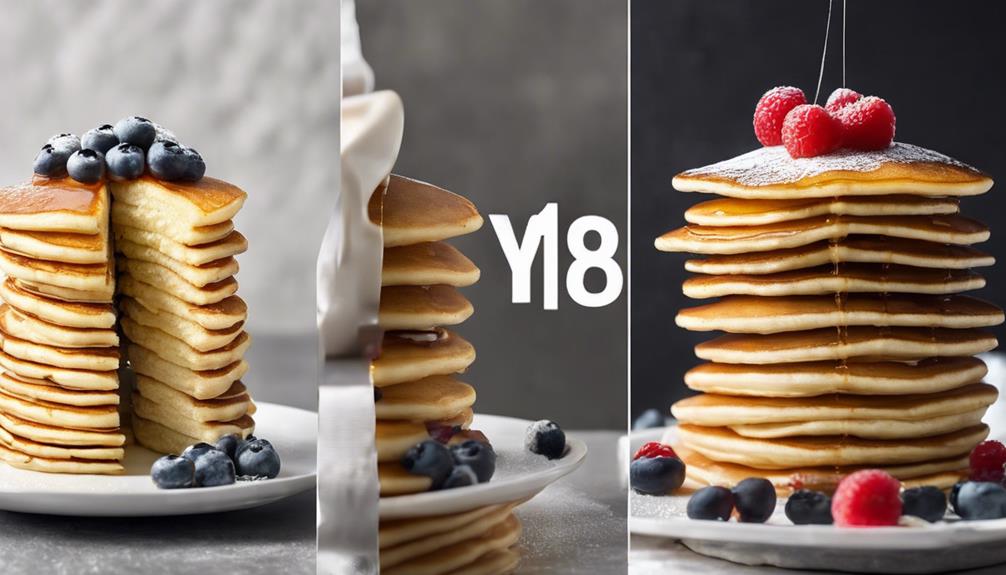As I relax with a cozy cup of raw CBD-infused cacao in my hands, the delightful scent of chocolate surrounds me, welcoming me into a realm of tranquility and health. There is indeed something enchanting about this luxurious drink that merges the advantages of CBD with the richness of raw cacao.
In this article, I will guide you through the process of making your own raw CBD sipping cacao at home. We will delve into the incredible health benefits of both CBD and raw cacao, and I will help you choose the right CBD product for your needs. Together, we will gather the necessary ingredients and explore the different flavors and additions you can experiment with.
Moreover, I will provide you with insights on the proper dosage of CBD in your sipping cacao and share tips on how to incorporate this delightful treat into your daily routine. Lastly, I will advise you on storing and enjoying your raw CBD sipping cacao.
So, let’s dive in and embark on this journey of blissful sips and nourishment.
Key Takeaways
- Raw CBD sipping cacao can be easily incorporated into smoothies for stress relief and potential pain management.
- Proper storage in a cool, dry place preserves the flavor and potency of raw CBD sipping cacao.
- Using fresh and high-quality ingredients is crucial for the best CBD and cacao taste.
- Experimenting with different flavors can enhance the raw CBD sipping cacao experience.
Understanding the Benefits of CBD
Understanding the benefits of CBD is essential when exploring its potential use for anxiety and pain relief. CBD, or cannabidiol, has gained attention for its ability to treat anxiety and provide pain relief. Research suggests that CBD may reduce anxiety by interacting with receptors in the brain that regulate fear and stress. It also has anti-inflammatory properties, which could contribute to its potential as a pain reliever. While more studies are needed to fully understand these effects, many people have reported positive outcomes when using CBD for anxiety and pain relief. It’s important to note that CBD can complement the potential benefits offered by raw cacao, making it a natural and delicious ingredient to consider.
Exploring the Health Benefits of Raw Cacao
To explore the health benefits of indulging in this decadent treat, you’ll be amazed to discover that studies show consuming cacao can significantly reduce the risk of heart disease by up to 37%.
Here are three reasons why raw cacao is a nutritional powerhouse:
-
High in antioxidants: Raw cacao contains flavonoids, which are potent antioxidants that protect our cells from damage caused by free radicals.
-
Mood booster: Cacao stimulates the production of endorphins and serotonin, which can improve mood and promote feelings of happiness.
-
Nutrient-rich: Raw cacao is packed with essential minerals like magnesium, iron, and zinc, which are important for overall health and wellbeing.
By incorporating raw cacao into your diet, you can enjoy its amazing health benefits.
Now, let’s move on to the next section and learn about choosing the right CBD product for your sipping cacao.
Choosing the Right CBD Product for Your Sipping Cacao
When selecting the appropriate CBD product for your indulgent cacao beverage, it is crucial to consider various factors.
First, evaluate the type of CBD product available, such as tinctures, edibles, or capsules, and choose the one that suits your preferences.
Additionally, check the CBD dosage guidelines provided by the manufacturer to ensure you are consuming the right amount of CBD for your needs. This will help you achieve the desired effects without any potential side effects.
Remember, everyone’s body is different, so it may take some trial and error to find the perfect CBD dosage for you.
By understanding the cbd product selection and following the cbd dosage guidelines, you can confidently enjoy the benefits of CBD in your raw cacao beverage.
Now, let’s move on to gathering the ingredients for your raw CBD sipping cacao.
Gathering the Ingredients for Your Raw CBD Sipping Cacao
Now that you’ve mastered the art of selecting the perfect CBD product, it’s time to gather the ingredients for your decadent, blissful cacao indulgence. Here are some tips to ensure you have everything you need for your raw CBD sipping cacao:
-
Raw Cacao Powder: Look for a high-quality, organic option. It’s rich in antioxidants and can boost your mood.
-
CBD Oil: Choose a CBD oil that is specifically designed for ingestion and has been third-party tested for purity and potency.
-
Sweetener: Opt for a natural sweetener like maple syrup or honey to enhance the flavor of your cacao without adding any artificial ingredients.
-
Non-Dairy Milk: Whether it’s almond milk, coconut milk, or oat milk, choose a non-dairy option to create a creamy and luscious texture.
Now that you’ve gathered all the ingredients, let’s move on to preparing your raw CBD sipping cacao at home.
Preparing Your Raw CBD Sipping Cacao at Home
Get ready to indulge in a decadent and blissful homemade treat – it’s time to prepare your own luxurious CBD-infused hot chocolate! Preparing your raw CBD sipping cacao at home is easier than you might think.
To start, gather your ingredients, including raw cacao powder, CBD oil, a natural sweetener, and your choice of milk or non-dairy alternative.
When it comes to preparing techniques, it’s important to remember not to overheat the CBD oil, as high temperatures can diminish its effectiveness. Start by gently warming your milk or alternative on the stove, then whisk in the cacao powder, sweetener, and a few drops of CBD oil. Continue stirring until everything is well combined and smooth.
As you sip on this rich and velvety elixir, you’ll not only enjoy its delectable flavors but also reap the health benefits of CBD.
Now, let’s transition into the next section on experimenting with flavors and additions, where we’ll take your CBD-infused hot chocolate to the next level.
Experimenting with Flavors and Additions
Indulge in a truly luxurious and mind-blowing experience by exploring a myriad of flavors and additions to elevate your homemade CBD-infused hot chocolate to unimaginable heights. Enhancing the flavor combinations of your raw CBD sipping cacao not only adds depth and complexity but also allows you to tailor the taste to your preferences.
Here are three exciting ideas to get you started:
-
Minty Fresh: Add a splash of peppermint extract or a few crushed mint leaves for a refreshing twist. This combination not only tantalizes your taste buds but also brings digestive benefits and may alleviate headaches.
-
Spiced Delight: Sprinkle in a pinch of cinnamon, nutmeg, or even a dash of cayenne pepper for a warming and comforting experience. These spices not only add a cozy aroma but also have anti-inflammatory properties that can support overall well-being.
-
Nutty Bliss: Stir in a spoonful of almond butter or hazelnut spread for a creamy and indulgent treat. These nutty additions not only enhance the texture but also provide healthy fats and protein for sustained energy.
Experiment with these flavor combinations and savor the health benefits they bring. Understanding the proper dosage of CBD in your sipping cacao is crucial for a balanced experience.
Understanding the Proper Dosage of CBD in Your Sipping Cacao
Discover the perfect balance of CBD dosage in your decadent hot chocolate to enhance your experience and unlock a world of relaxation and well-being.
When it comes to enjoying raw CBD sipping cacao, understanding the proper dosage is essential to maximize its effectiveness. CBD dosage can vary depending on factors such as body weight, metabolism, and individual tolerance levels.
It is recommended to start with a low dosage and gradually increase until you find the right amount that works for you. Keep in mind that CBD can take some time to build up in your system, so be patient and allow yourself to adjust accordingly.
By finding the proper dosage, you can ensure that you are getting the most out of your CBD sipping cacao experience. Transitioning into incorporating raw CBD sipping cacao into your daily routine can be a seamless and enjoyable process.
Incorporating Raw CBD Sipping Cacao into Your Daily Routine
Now that you understand the proper dosage of CBD in your sipping cacao, let’s talk about incorporating raw CBD sipping cacao into your daily routine.
One great way to do this is by adding it to your morning smoothie. By blending your favorite fruits, vegetables, and a scoop of raw CBD sipping cacao, you can create a delicious and nutritious beverage that will start your day off right.
The benefits of CBD-infused beverages are numerous, as they can provide relaxation, stress relief, and potential pain management. Plus, the rich flavors of the cacao blend perfectly with the other ingredients in your smoothie, creating a delightful taste experience.
So, whether you’re a smoothie lover or looking to add more CBD to your routine, incorporating CBD into your smoothies is a great option.
Now, let’s move on to some tips for storing and enjoying your raw CBD sipping cacao.
Tips for Storing and Enjoying Your Raw CBD Sipping Cacao
Make the most of your CBD-infused treat by following these helpful tips for storing and savoring your indulgent beverage. Here are some tips to ensure your raw CBD sipping cacao stays fresh and delicious:
-
Store in a cool, dry place: Keep your raw CBD sipping cacao in a sealed container away from direct sunlight and heat to preserve its flavor and potency.
-
Use fresh ingredients: To enjoy the full benefits of CBD and the rich taste of cacao, make sure to use fresh and high-quality ingredients.
-
Experiment with different flavors: Add a dash of cinnamon, peppermint extract, or even a sprinkle of sea salt to enhance the flavor profile of your raw CBD sipping cacao.
-
Sip slowly and savor: Take the time to fully enjoy each sip of your indulgent beverage, allowing the flavors to unfold on your palate.
-
Pair with a cozy setting: Create a calming ambiance by enjoying your raw CBD sipping cacao in a comfortable and relaxing environment.
By following these storing and enjoying tips, you can elevate your raw CBD sipping cacao experience and fully indulge in its deliciousness.
Frequently Asked Questions
Can I use any type of CBD product for my sipping cacao?
Yes, you can use different types of CBD products for your sipping cacao. CBD oil, tinctures, or even CBD-infused powders are great options. The benefits of using CBD in sipping cacao include relaxation, stress reduction, and potential pain relief.
How long will the effects of CBD last when consumed in sipping cacao?
The effects of CBD consumed in sipping cacao can last for several hours. However, the long-term effects are still being studied. It’s important to be aware of potential interactions with other medications.
Can I add sweeteners or other flavors to my raw CBD sipping cacao?
Adding sweeteners or flavors to raw CBD sipping cacao can enhance its taste, but there are pros and cons to consider. Best sweeteners include honey, stevia, or maple syrup. Flavors like vanilla extract or mint can also complement the CBD cacao experience.
Is it safe to consume raw CBD sipping cacao while pregnant or breastfeeding?
It is not recommended to consume CBD while pregnant or breastfeeding due to potential risks. There are alternative relaxation methods such as meditation, gentle exercise, and aromatherapy that can be safer during this time.
Can I adjust the dosage of CBD in my sipping cacao depending on my needs?
Yes, you can adjust the dosage of CBD in your sipping cacao depending on your needs. It’s important to find the right dosage for you to maximize CBD’s effectiveness and achieve the desired benefits.
Can I Use Raw Cacao in Philadelphia, PA to Make CBD Sipping Cacao?
Yes, you can use raw cacao in Philadelphia, PA to make CBD sipping cacao. Raw cacao has numerous health benefits and when combined with CBD, it can create a delicious and calming beverage. Make sure to use high-quality raw cacao for the best flavor and benefits.
Conclusion
In conclusion, indulging in a steaming cup of raw CBD sipping cacao is like wrapping yourself in a cozy blanket on a cold winter’s day. The combination of the soothing CBD and the rich, velvety cacao creates a symphony of relaxation and wellness for your body and mind.
With its numerous health benefits and customizable flavors, this homemade elixir is a delightful addition to your daily routine. So, why not treat yourself to a warm hug in a mug and savor the blissful experience of raw CBD sipping cacao?






